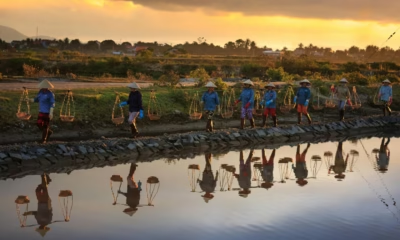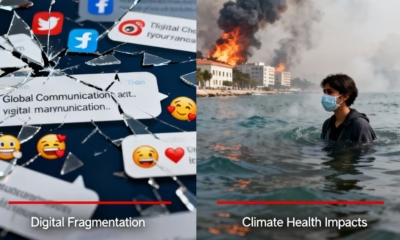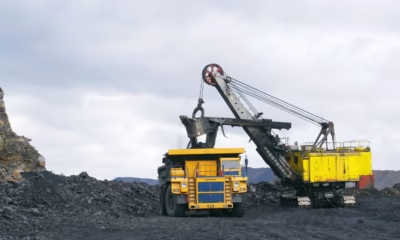COP30
COP30: How People, Not Politics, Are Powering the Next Phase of Climate Action
From rooftop revolutions to billion-dollar clean-energy investments, the global shift toward renewables is already happening — citizens and markets are leading where politics still hesitates.
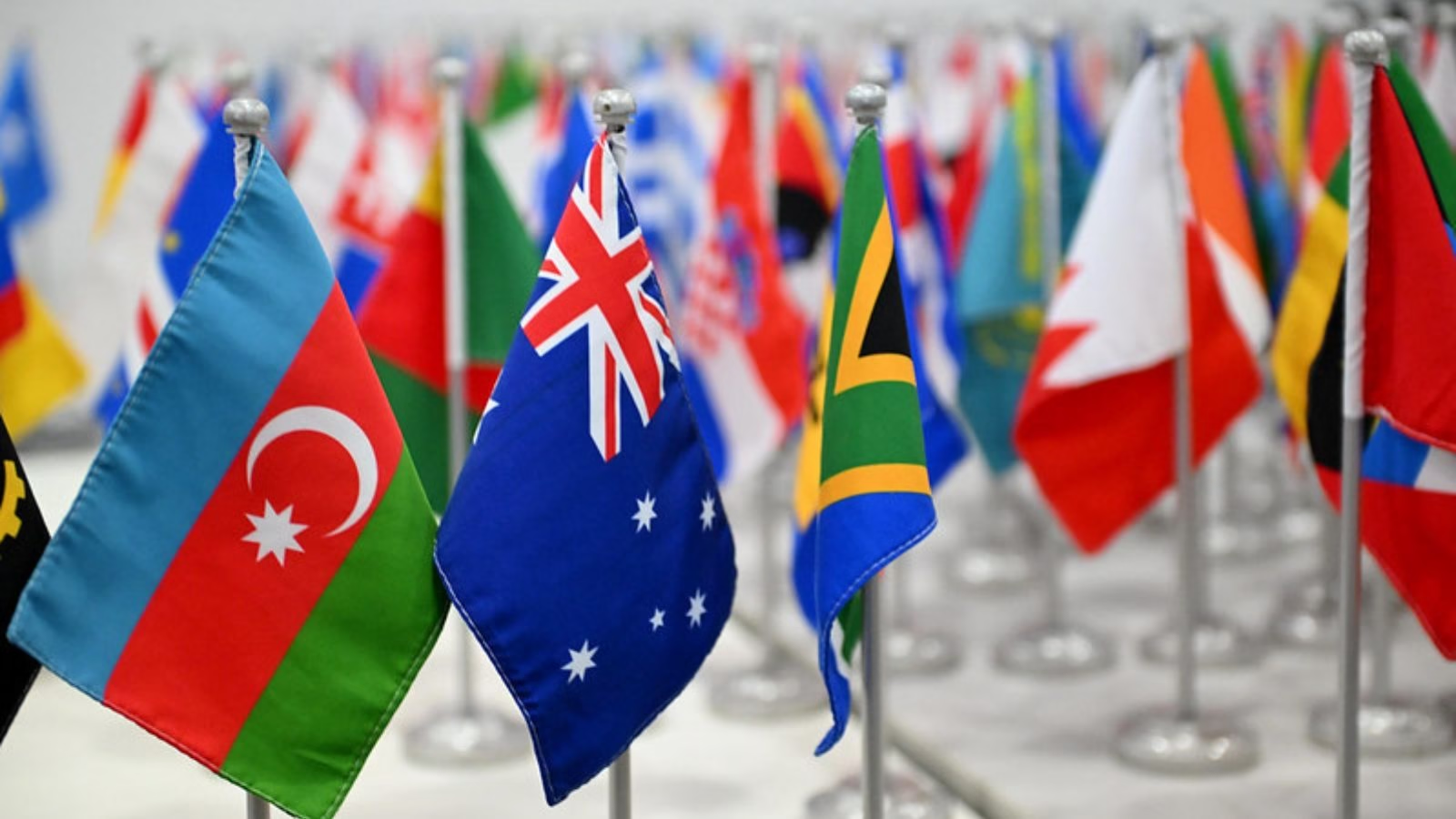
As the world converges on Belém for the 30th UN Climate Change Conference (COP30), the air is heavy not just with Amazonian humidity—but with expectation. Ten years after the Paris Agreement, the story of global climate action has entered a new chapter. One defined less by negotiation rooms and more by rooftops, communities, and citizens who have already begun to build the future politicians still debate.
A new statement released just a week before the summit, titled “Protect What We Love,” captures this shift. Signed by 75 leaders across politics, culture, and civil society—including Christiana Figueres, Ban Ki-Moon, Mary Robinson, Richard Branson, Stella McCartney, and Dia Mirza—the call to action urges governments to finally transform past commitments into tangible plans.
“You agreed to transition away from fossil fuels. You agreed to halt and reverse deforestation. You agreed to mobilize finance for adaptation and mitigation in developing countries,” the statement reminds world leaders. “At COP30, we ask you to show us how—through concrete plans and timelines—so that we can protect the people and places we love.”
This appeal comes amid fresh global polling data showing what the authors call “the 89%”—an overwhelming majority of citizens worldwide who want faster climate action. The findings, by the Potential Energy Coalition, reveal that eight in ten people across ten countries support government investment in wind, solar, and nuclear energy—double the number backing fossil fuels. And notably, that support transcends politics. Even conservatives, often framed as skeptics, are 1.6 times more likely to favour clean-energy investment than fossil fuel subsidies.
A Decade That Defied Predictions
That popular consensus coincides with new evidence of real progress. According to “Five Shifts: A Decade of Progress Since the Paris Agreement,” released in early November 2025, the world has made more headway in clean-energy deployment and policy integration than most experts dared to expect back in 2015.
In the decade since Paris, renewable energy jobs have nearly doubled to 16.2 million, and annual clean-energy investments reached $2.2 trillion—twice that of fossil fuels. Ninety percent of all new power capacity added globally in 2025 came from renewables. Solar costs have plummeted by 80% since 2014.
The transformation is not just environmental—it’s economic. “The fossil fuel industry knows that the new economy is rising,” said Christiana Figueres, one of the architects of the Paris Agreement. “They know that they can no longer compete. We are no longer in a world in which only climate politics has a leading role, but increasingly climate economics.”
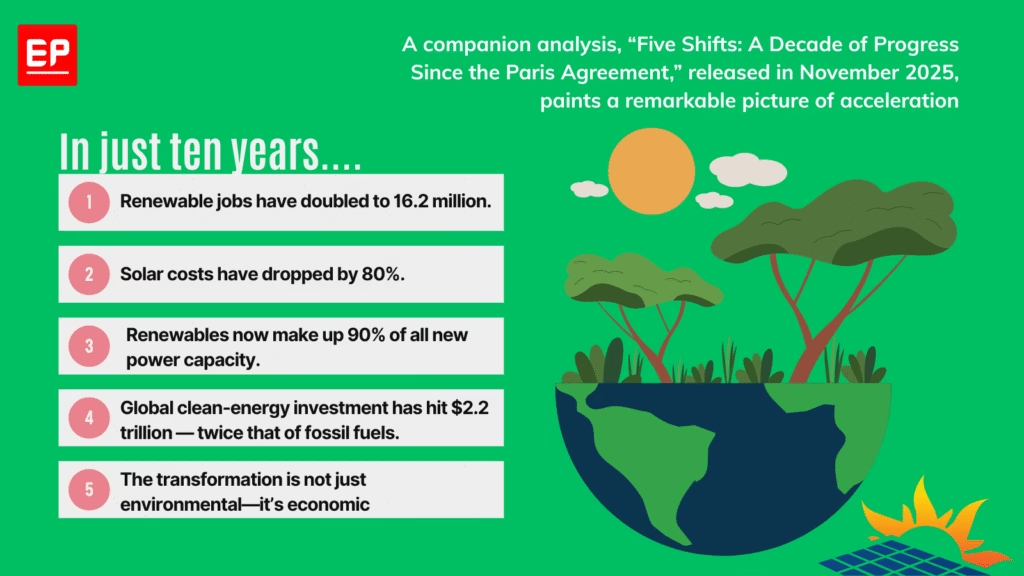
That’s a profound shift in the centre of gravity. In 2015, climate action depended on international consensus. In 2025, it increasingly depends on investment logic.
From Pledges to Proof
Still, COP30 will test whether politics can keep pace with the real world. “It’s a different kind of COP than we’ve had before,” said Jennifer Morgan, Germany’s Special Envoy for International Climate Action. “It is one where there’s not one big fund or one big outcome. One really needs to be looking at the signals, the decisions, and the proof points to see how leaders and countries are accelerating implementation—because that’s what this is all about: going faster, going further, building on the success, learning the lessons of the lack of success.”
The Five Shifts report echoes that sentiment. Its authors warn that while clean energy is winning both economically and politically, emissions are not yet falling at the speed required. The UNEP Emissions Gap Report 2025, published days before the summit, estimates that even with full implementation of current national climate plans (NDCs), global warming would reach 2.3–2.5°C, and 2.8°C under existing policies.
$2.2 trillion in clean-energy investment in 2025 — twice fossil fuels
The world is already 1.35°C warmer, with extreme heat events multiplying by a factor of nine since 2015. Yet the same report highlights practical successes: half of all countries now have heat-warning systems, and 47 operate national heat action plans, saving lives in cities from Senegal to Japan.
For Bill Hare, CEO of Climate Analytics, the takeaway is simple: “The world can still return to well below 1.5°C if the highest possible ambition is pursued by countries starting now. Getting to net zero carbon dioxide emissions means that we can halt warming pretty quickly.”
Citizens Are the New Climate Majority
What distinguishes COP30 from the summits before it is not just scientific urgency—it’s civic clarity. As the Protect What We Love statement declares, “We are the 89%: the overwhelming majority of the global population who want you to act faster on climate change.”
That human dimension is front and centre. Leanne Brummell, representing Parents for Future Global, spoke for millions of families when she said:
“As parents, our first duty is to protect our children. The climate crisis is a direct threat to their safety and their future… We are part of the 89% of people globally who want to see their governments take more action to protect the places and people we love.”
The emotional urgency resonates far beyond activist circles. Dia Mirza, actor and UN advocate, said: “As a mother, I see the truth of today’s statement in my children’s eyes every day. People everywhere are rising to build, buy, and create the solutions that will keep our children safe. Public support for climate action is undeniable, and the technology and answers already exist. At COP30, I ask world leaders to act with the same instinct every parent has—to protect what we love most: our children and their future.”
This groundswell of public will is now being matched by business leadership. A new E3G poll found 97% of global executives backing a rapid transition to renewable-based electricity. Major corporations have joined the We Mean Business coalition, urging governments to create policies that reward decarbonization rather than delay it.
“Climate breakdown is no longer a distant risk for business—it’s already disrupting operations through extreme weather events such as floods and droughts,” said Fiona Duggan, Global Sustainability Manager at Unilever. “Forward-thinking companies are moving to adapt and decarbonise as rapidly as their sectors will allow. The real question is whether governments will support them to go further, faster.”
Constructive Pathways: What’s Working
A decade of experimentation has produced more success stories than cynics expected. Countries once seen as dependent on fossil fuels—Nigeria, Senegal, Brazil, Indonesia—are embedding climate action into fiscal and planning systems. Nigeria’s 2021 Climate Law supports a 2060 net-zero target; Senegal’s local experts now drive national adaptation plans; Brazil’s Finance Ministry leads an Ecological Transformation Plan linking fiscal reform with green growth.
According to Henri Waisman, Director of the DDP Initiative, “Countries have begun to reshape climate governance, embed long-term perspectives into policymaking, and accelerate technological change. This progress is significant. But the lesson of the past decade is equally clear: if we are to achieve the goals of Paris, the next decade must be about scaling up efforts, addressing social and industrial challenges, and ensuring that ambition is consistently translated into effective action.”
These local models, backed by citizens’ trust and economic dividends, suggest that climate action isn’t just a moral imperative—it’s a viable development strategy.
The Belém Moment
If there’s a unifying message emerging from Rio’s press releases to Belém’s plenary halls, it’s this: the transition has already begun.
Citizens, investors, and innovators are not waiting for permission. “Ordinary people understand that clean energy will improve their lives and have begun the transition their leaders keep promising,” said environmentalist Bill McKibben. “Rooftop by rooftop, community by community, they’re proving the future can arrive before the politics to govern it.”
COP30 thus becomes less about what to agree upon—and more about how fast to deliver what’s already agreed. The Five Shifts report puts it succinctly: “COP30 must move beyond pledges to concrete delivery: addressing the ambition gap in current NDCs, accelerating finance for adaptation, and ensuring just transitions away from fossil fuels. The decisions made in Belém will determine whether the 2030s become a decade of decisive implementation.”
From Political Will to Public Proof
Ten years ago, in Paris, climate ambition was an act of collective imagination. In Belém, it’s a lived reality, visible in data, rooftops, and balance sheets. The clean-energy revolution is no longer hypothetical—it’s happening.
The challenge now is whether governments will catch up with their citizens. Because, as the 89% have made clear, the mandate to act isn’t waiting for another conference. It’s already out there—building, investing, and protecting what we love.
COP30
Brazil Cuts Emissions by 17% in 2024—Biggest Drop in 16 Years, Yet Paris Target Out of Reach
Brazil’s 2024 emissions dropped 16.7% to 2.15 GtCO₂e, led by Amazon deforestation control—the biggest annual fall since 2009—but the country still risks missing its Paris climate goals.

Brazil’s groEmissionsss greenhouse gas emissions fell from 2.576 billion tons of CO₂ equivalent in 2023 to 2.145 billion tons in 2024, the lowest drop since the country’s 17.2% decline in 2009. This turnaround was powered by enforcement against illegal deforestation, reversing a period of lax protections between 2019 and 2022. The net emissions figure—which deducts carbon absorbed by secondary forests and protected areas—dropped even further, down 22% year-on-year, landing at 1.489 billion tons in 2024.
Sectoral Breakdown: Where Emissions Fell and Rose
The land-use sector, mostly deforestation, saw its gross emissions tumble from 1.341 to 0.906 billion tons (32.5% drop)—the largest reduction on record for any sector. This shifted the national emissions profile:
>> Land use change: 42% in 2024, compared to 52% in 2023
>> Agriculture: 29%, up from 24%
>> Energy: 20%, up from 16%
>> Waste: 5%
>> Industrial processes: 4% (both stable)
Emissions in agriculture and energy remained mostly flat, with only waste (up 3.6%) and industry (up 2.8%) recording notable increases.
Deforestation Down, but Not the Whole Story
Enhanced government actions led to a 33% decline in Amazon deforestation emissions and a 41% drop in the Cerrado. Nevertheless, fires not associated with deforestation nearly doubled Brazil’s net deforestation emissions—an emerging risk as climate change fuels extreme drought and wildfires across formerly resilient biomes.
Agriculture, Cattle, and Energy: Stubborn Sources
Brazil’s cattle sector remains the single largest emissions source, responsible for roughly 51% of national total. Efforts to control methane—including increased feedlot use and smaller herds—delivered a marginal 0.2% reduction in herd size and a slight drop in emissions. Nitrous oxide from fertilizers and lime also saw small declines, offsetting overall emission growth. Notably, emissions from energy rose nearly 1% due to record travel and electricity demand; only record ethanol and biodiesel consumption kept fossil CO₂ in check.
Paris Pledge Still Out of Sight
Despite the historic emissions drop, Brazil is projected to end 2025 with net emissions of 1.44 billion tons—9% above its target under the Paris Agreement of 1.32 billion tons. While deforestation is falling, rising emissions from energy, agriculture, waste, and industry threaten to undermine overall climate progress. Experts emphasize that broader emission cuts, especially in fossil energy, are urgently needed for Brazil to have a chance at meeting its 2030 target (1.2 billion tons).
Brazil’s 2024 emissions breakthrough underscores the pivotal impact of deforestation control on the country’s climate footprint. Yet, absent deeper reforms in agriculture, waste, and especially energy, Brazil’s Paris goals may remain out of reach—a clear signal for policymakers ahead of COP30.
Health
Air Pollution Claimed 1.7 Million Indian Lives and 9.5% of GDP, Finds The Lancet
In 2022 alone, fine particulate pollution — PM2.5 — killed an estimated 1.7 million people in India, according to the Lancet Countdown on Health and Climate Change 2025.

In 2022 alone, fine particulate pollution — PM2.5 — killed an estimated 1.7 million people in India, according to the Lancet Countdown on Health and Climate Change 2025.
The same toxic particles that fill Delhi’s winter air and blanket cities from Kanpur to Kolkata also caused economic losses equivalent to 9.5% of India’s GDP, revealing that air pollution is not just a public health emergency, but a national economic crisis hiding in plain sight.
A Crisis Woven into Everyday Life
India’s worsening air quality is no longer a seasonal problem. According to The Lancet Countdown, over a third of Indians were exposed to PM2.5 levels exceeding World Health Organization (WHO) limits for more than 10 months of the year.
Rising temperatures, urban sprawl, and fossil fuel combustion — from coal-fired power plants to vehicle emissions — have created a deadly feedback loop that is choking the country’s lungs and its economy.
“Air pollution in India is a silent pandemic. It’s not only shortening lives, but undermining productivity, healthcare systems, and economic growth,” said Dr. Marina Romanello, Executive Director of The Lancet Countdown, in the report’s global launch statement.
The Health Toll: From Newborns to the Elderly
The Lancet Countdown 2025 estimates that the global death toll from air pollution reached 8.3 million in 2022, with India accounting for over one-fifth of those fatalities.
PM2.5 — particles less than 2.5 microns in diameter — penetrate deep into lungs and bloodstreams, causing or worsening heart disease, stroke, diabetes, and respiratory illness.
In India, the burden falls disproportionately on the poorest households, who are more likely to live near highways, coal plants, or industrial clusters and have limited access to healthcare.
Children and elderly people are the most vulnerable: the report highlights that exposure to dirty air increases the risk of low birth weight, premature births, and chronic illness later in life.
Counting the Cost: 9.5% of GDP Lost
The Lancet Countdown’s economic assessment, based on lost labour productivity, healthcare costs, and premature deaths, found that India lost 9.5% of its GDP in 2022 due to air pollution-related impacts.
That’s roughly equivalent to USD 300 billion — more than India’s entire annual education and health budgets combined.
Urban centres such as Delhi, Lucknow, and Patna rank among the most polluted in the world.
Air pollution is estimated to reduce life expectancy in northern India by up to 7 years, according to the Energy Policy Institute at the University of Chicago, underscoring how pervasive the damage has become.
“For a fast-growing economy like India, this is a double blow,” said Prof. Randeep Guleria, pulmonologist and former AIIMS director. “It burdens healthcare systems while reducing worker output — exactly the opposite of what a young nation needs.”
Climate and Air: The Same Enemy
The report connects India’s pollution crisis to its dependence on fossil fuels — especially coal — which remains the largest source of both CO₂ and PM2.5 emissions.
While government programmes such as the National Clean Air Programme (NCAP) and electric mobility initiatives aim to reduce pollution, progress has been slow.
Many of the dirtiest thermal plants continue to operate without meeting emission standards, and vehicle emissions remain poorly regulated outside major cities.
“Air pollution is not a separate problem from climate change — it’s the same story told through different symptoms,” noted Dr. Romanello. “Every tonne of coal burned harms both lungs and the climate.”
This linkage is echoed in India’s own National Electricity Plan 2032, which outlines aggressive renewable targets, and in Ember’s 2025 analysis, which found that expanding coal capacity further would be economically irrational — a finding that strengthens the case for rapid decarbonisation.
Health as an Economic Argument
The Lancet Countdown reframes pollution not just as an environmental or health challenge, but as an economic imperative.
In India, labour losses due to heat and pollution exposure have grown by 42% since the early 2000s, with outdoor and informal workers suffering the most.
As heatwaves and smog increasingly overlap, lost work hours and rising healthcare costs could slow GDP growth by up to 1.8 percentage points annually by the mid-2030s if left unchecked.
Experts say cleaner power and transport sectors could deliver rapid wins:
- Phasing out coal and shifting to renewables can cut PM2.5 emissions by over 60% in key industrial zones.
- Expanding public transit and EV adoption can reduce vehicular PM2.5 by one-third in metropolitan regions.
- Strengthening NCAP’s monitoring and enforcement could save hundreds of thousands of lives each year.
From Policy to Breathable Air
Despite India’s national clean air mission and renewable push, enforcement and coordination remain major gaps.
The report calls for integrating air quality and climate policies, arguing that cutting fossil fuel use provides a “double dividend” — cleaner air and fewer greenhouse gases.
This integration has begun in limited form: several Indian states, including Gujarat and Maharashtra, have introduced emissions trading schemes for industrial pollutants.
But experts say scaling such initiatives nationally, alongside stricter vehicle standards and urban planning reforms, is critical for measurable results.
A Moment of Reckoning
The Lancet Countdown 2025 warns that air pollution and climate impacts are already reversing health gains made over decades.
India’s choice is no longer between growth and clean air — it’s about whether growth can continue at all under the weight of rising illness, lost labour, and degraded ecosystems.
“Air pollution is robbing India of its demographic dividend,” the report concludes. “Clean air is not a luxury; it’s a prerequisite for sustainable development.”
As the smog season begins once again in northern India, the data are unambiguous:
The invisible killer is now visible — and unaffordable.
References:
The Lancet Countdown on Health and Climate Change 2025; The Lancet; Energy Policy Institute at the University of Chicago (EPIC); Ember; CREA.
Earth
Farmers Warn: The World Needs $443 Billion a Year to Protect Those Feeding Half of Humanity
A new global report reveals smallholder farmers need $443 billion annually to adapt to climate change—less than today’s harmful farm subsidies. As COP30 nears, farmer groups demand direct funding for resilience.

A new global analysis released ahead of COP30 warns that the world must mobilize at least US$443 billion each year to help smallholder farmers adapt to worsening climate impacts—nearly the same amount currently spent on subsidies that harm both people and the planet.
The report, released by Climate Focus for the Family Farmers for Climate Action (FFCA)—an alliance representing 95 million small-scale producers worldwide—reveals that only 0.36% of needed funds currently reach these farmers.
Smallholders, who farm less than 10 hectares each, produce half of the world’s food calories and sustain 2.5 billion livelihoods, yet face rising threats from droughts, floods, and storms. “This isn’t charity—it’s an investment in global food security,” said Elizabeth Nsimadala, President of the Eastern Africa Farmers Federation.
The Cost of Survival: Less Than a Daily Coffee
According to the report, the annual adaptation cost for a typical one-hectare farm is just US$953—or about US$2.19 a day—less than the price of a cup of coffee in Germany. Meanwhile, smallholders already spend 20–40% of their income on adaptation measures, totaling US$368 billion a year from their own pockets.
Investments would support vital measures like micro-irrigation systems, early warning networks, and climate-resilient seeds—steps proven to prevent devastation from saltwater intrusion in Vietnam’s Mekong Delta or drought crises across East Africa.
Dangerous Finance Gaps Leave Farmers Defenseless
Despite their crucial role, current global spending on smallholder adaptation reached only US$1.59 billion in 2021, a drop in the ocean compared to the estimated need. Bureaucratic barriers, limited access to rural banking, and restrictive loan conditions mean that small-scale farmers are frequently shut out of official climate finance systems.
A study cited in the report found that none of the 40 major GEF or GCF projects designed to assist small-scale producers sent funds directly to family farmers. Instead, farmers often rely on informal credit sources with crushing interest rates.
COP30: A Turning Point for Climate Justice
As the upcoming COP30 in Brazil puts adaptation at the centre of global negotiations, farmer-led groups are demanding a dedicated “Farmers Resiliency Fund” to ensure money flows directly to those growing the world’s food.
The Brazilian Presidency’s Action Agenda—which emphasizes sustainable agriculture and hunger eradication—has given hope for reform. However, questions remain over whether rich nations will double adaptation finance to US$40 billion by 2025 or commit to a long-term goal that includes
-

 Space & Physics6 months ago
Space & Physics6 months agoIs Time Travel Possible? Exploring the Science Behind the Concept
-

 Know The Scientist6 months ago
Know The Scientist6 months agoNarlikar – the rare Indian scientist who penned short stories
-

 Know The Scientist5 months ago
Know The Scientist5 months agoRemembering S.N. Bose, the underrated maestro in quantum physics
-

 Space & Physics3 months ago
Space & Physics3 months agoJoint NASA-ISRO radar satellite is the most powerful built to date
-

 Society5 months ago
Society5 months agoAxiom-4 will see an Indian astronaut depart for outer space after 41 years
-

 Society5 months ago
Society5 months agoShukla is now India’s first astronaut in decades to visit outer space
-

 Society5 months ago
Society5 months agoWhy the Arts Matter As Much As Science or Math
-

 Earth5 months ago
Earth5 months agoWorld Environment Day 2025: “Beating plastic pollution”



